Whether you live in a suburban or rural location, if you’re interested in preparing for the worst or you simply want to be as self-sufficient as possible, keeping chickens is a great way to free your family from some of their dependence on the supermarket.
Just think of how often you make a trip to the store just to get eggs, and now imagine having your own laying hens producing eggs right in your backyard.
Keeping a few chickens is really a no-brainer for anyone living in the country or on a rural farmstead, but if you live in a suburban or even an urban area, you may still be able to keep a few. Simply check your local city and/or homeowner’s association ordinances.
Although roosters are explicitly banned in most urban areas, a lot of cities and towns still allow families to keep a certain number of laying hens, usually between 3 – 6 birds or more.
If you’re interested purely in egg production, some of the best breeds for eggs include:
- The Leghorn is a light-weight egg-laying champion originally bred and raised in Tuscany, Italy. Prolific egg layers, these birds come in black, white and a range of brown shades; hens lay an average of 280 eggs a year, with some hens producing as many as 300 – 320 eggs in a year. Leghorn eggshells are white, with hens maturing quickly to begin laying as early as 6 months old, but they are a shyer, more flighty breed.
- The Orloff originally hailed from Persia, but was popularized by the efforts of, and named after, a Russian count: Alexei Orlov. With their range of colors and exceptional egg laying capability, these robust birds grow to a healthy weight of 6 – 9 pounds and are most notable for their hardiness and general resistance to cold. For survivalists, homesteaders or families who live in more northern reaches, the Orloff is an excellent, hardy breed; a reliable egg-layer with decent potential as a meat bird if necessary.
- Ancona hens are excellent, compact egg-layers, with adult hens reaching 4 – 5 lbs. and cocks only ~6 lbs. Capable of reliably laying 250 – 300 eggs a year, this breed lays a large, white egg. Ancona chickens are also a hardy breed, capable of adapting to hot and cold temperature extremes, as well as tolerant of some humidity.
Aside from great egg-laying breeds, however, chickens also taste great and they are one of the most affordable of all meats to raise. Raising chickens is also fairly easy, especially if you have the space to let them free range, so if meat-production is what you’re most interested in here are some of the best breeds to consider:
- The Cornish Cross and related hybrids are a very popular breed of broiler chicken. Capable of reaching a slaughter weight of 6 lbs. in as little as 5 – 8 weeks from hatching due to their super-fast growth rate, this is the breed of choice amongst commercial producers and they far outpace most other meat breeds and all dual-purpose breeds. Due to their exceptional rate of growth, the activity level of this breed is very low.
- The Bresse breed of chickens, a sizeable white bird with distinctive blue feet, is a very popular (and expensive) breed of chicken raised in France. Although initial breeding stock may be hard to come by, Bresse are prized for the tenderness and richer flavor of their meat. A closely related breed that is more easily obtained is the Blue Foot breed of chickens bred by a group of Canadians who obtained original Bresse stock from France.
For those who want the best of both worlds, there are a number of utility breeds that serve well as both laying hens and meat birds. Some of the most common dual-purpose breeds to keep are:
- Orpington chickens are great egg layers and the hens are notoriously good for brooding and hatching chicks. Distinctively fluffy looking with their mass of feathers, Orpington chickens come in a variety of colors, including white, buff, black, blue and other shades. They lay medium to large-sized, brown eggs, with a steady production of 175 – 200 or more eggs per year. Traditionally, Orpington hens were said to lay as many as 320+ eggs per year, but generations of breeding for show and looks rather than utility has detracted from some of the egg-laying capability of this breed. Adult hens and cocks range in weight from 7 – 10 lbs. or more. They can also tolerate cold, but don’t handle rain well. Finally, Orpington hens make excellent brood mothers and can be used to hatch the eggs of other hens, ducks and fowl.
- The Rhode Island Red is a prolific egg-laying dual-purpose breed, with hens laying anywhere from 200 – 300 large, brown eggs per year based on the quality of their feed. Hens and cocks range in weight from 6 – 9 lbs., and although the girls can sometimes be a bit aloof, most reds are friendly birds, well-suited to a small backyard flock. When breeding Rhode Island Reds it’s important to remember that the awesome egg-laying capabilities of this breed are passed down via the father.
- The Plymouth Rock, also commonly known as a Barred Rock after their most common color pattern, is another popular dual-purpose breed. Most sub-types of the Plymouth Rock are reliable egg-layers who will produce throughout winter, albeit with a decrease of production during the coldest months. Eggs from Plymouth Rock hens are large and range in color from dark to light brown. As meat birds, hens weigh an average of 7 – 8 lbs. or more, with grown males weighting 8 ½ – 9 lbs. or more. Plymouth Rock hens also make excellent brood hens and mothers, so they are excellent for hatching chicks.
- New Hampshire Red hens are reliable egg producers, laying anywhere from 180 – 250 eggs per year or more. As a medium-sized bird, this breed is the result of selective breeding of Rhode Island Red chickens. New Hampshire reds reach maturity very quickly, and at an average of 6 ½ – 8 lbs. they are suitable for broiling and roasting as well as other standard uses. In larger flocks, New Hampshire reds may display more competitiveness and aggression toward other hens.
Whether you have 40 sq. feet or 4000 sq. feet, a mixed flock of laying hens and meat-birds is a great way to start freeing you and your family from dependence. In addition to producing meat and eggs, feathers can also be harvested at slaughter time for use in quilting, pillow stuffing, jackets and many other common uses.
Best of all, you’ll get to enjoy the companionship of your new feathered friends as well as save yourself a bundle of money.
This article has been written by Gaia Rady for Survivopedia.



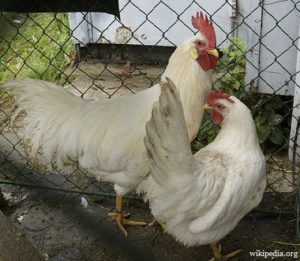
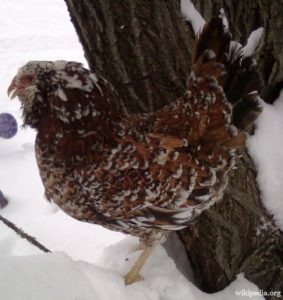
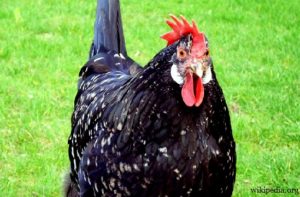
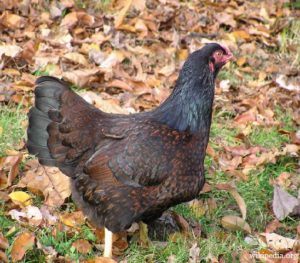
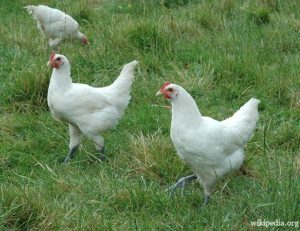
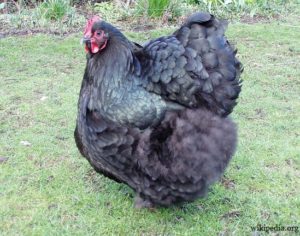
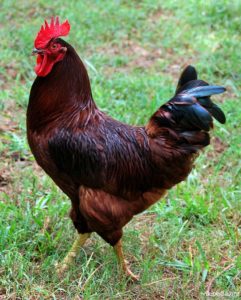
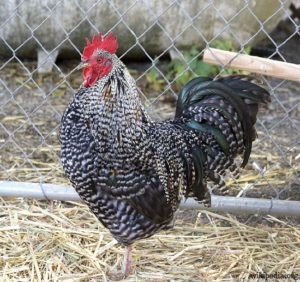
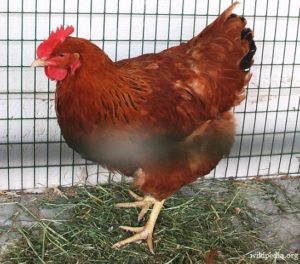


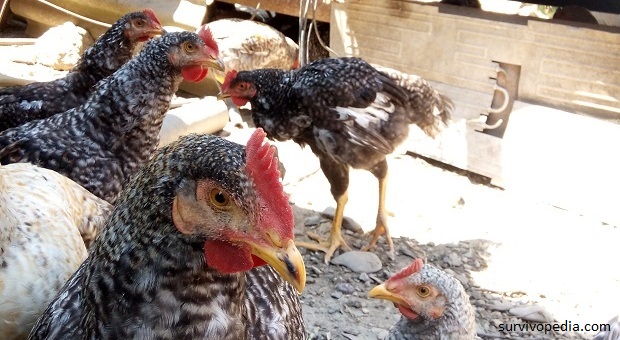
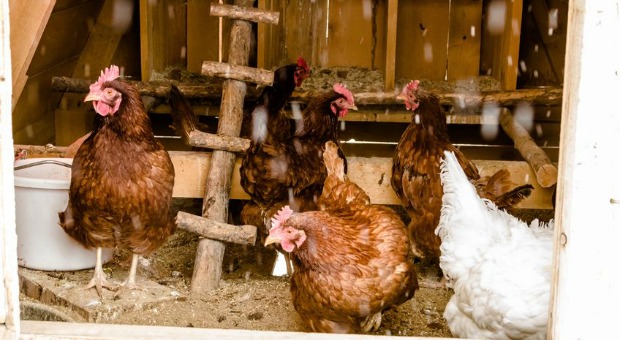
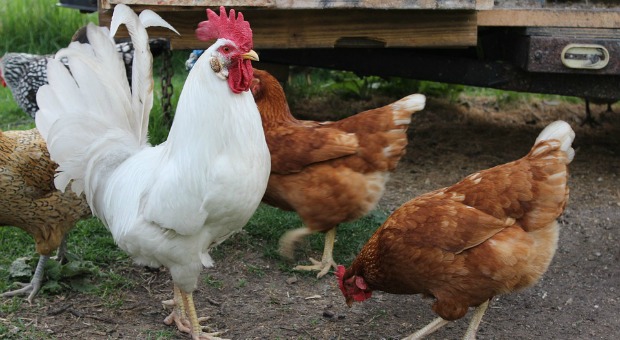

Vivienne | May 27, 2013
|
Very informative article. We had a couple of hens when we lived in a more rural area, and it was great to have our own eggs. Only problem is that hens are very vulnerable to predators (eg foxes… and snakes too) and more so when you let them run free range!
Naomi | May 27, 2013
|
Yes, we’ve learned so many ways to lose chickens, particularly baby chicks, but also full grown chickens. I think now is the time to lose a few so we’ll have them when we really need them. We’ve learned the importance of a good, sturdy coop that nothing can dig under and nothing can climb over the top into. We let them free-range in the day and put them up at night, which has pretty much solved all our loss problems. Now we can enjoy the eggs and meat.
michael levy | June 12, 2013
|
I do have 4 hens & a Rooster. A very powerfull Bird. He even attacks the Hawk & Racoons & Possum.s. And anything in my yard. He did fly in my yard a year ago. and looks after the hens. (A Boss). I have to use a large net some days& catch him & lock it up for me to work in the yard.
I have a 1/2 acre and do have a garden as well.
but had to fence in the garden to protect my veges, etc,.. These hens and rooster eat insects
lizards & bugs etc & turn over the soil for me when I need it done.
& I do get 3 to 4 large eggs daily. I may set some eggs later under a hen. To start a new set of chickens..Note the Rooster is very noisy. &
Dangerous. (No Visitors allowed) if he is out.
2shines | December 25, 2013
|
Hi i have 2 birds i use to have three. Two ladies that gave me one or two eggs maybe twice a week. Then i got this rooster i call him Big Bill; He killed one of my ladies within a week. He get’s along with Big Lucille no problem.They have been together for about almost two months now.She just started laying eggs again i notice the other day she had five eggs in the box & one behind on the floor. Should i be taking the eggs; should i eat them? ANY HELP!!!!
FRANK | May 27, 2013
|
I just learned that I have an allergy to eggs (whites & yokes), and possibly chicken…so now what? Looking for serious advice for other protien source…no smart ass coments please
mandy | May 27, 2013
|
Frank, you may want to consider fish-utilizing aquaponics. Fish is an excellent source of protein and from the research my husband and I have done, aquaponics is a great system for not only the fish, but vegetables as well. Even though we live in the smack dead middle of a 100,000 resident city, we are planning our own aquaponics system.
HJ Lewis | May 28, 2013
|
We are very interested in the idea of aquaponics. Do you have information you could email us? We are in the Northwest so the winters can be a bit chilly.
Rob | May 29, 2013
|
There’s a ton of info on you-tube… just google “aquaponics”. Also, depending on where you are in the Northwest (we are near Portland), there’s an outfit in Silverton (nwtalapia.com) that has a short two hour class to help people avoid mistakes. My wife and I are taking the class this Thursday.
Gus | May 29, 2013
|
Backyard liberty.com
Steve | May 27, 2013
|
You may also want to consider rabbits, no eggs, but truly prolific and require very little space.
Wendy | May 27, 2013
|
Hi Frank,
Look into NAET’s. It is accupressure treatments to remove allergies. I used to be terribly allergic to peanuts, garlic and anything outside. Had an epi-pen and a medic alert bracelet. Through NAETs I can now eat anything. I don’t carry an epi-pen anymore and was able to cancel my medic alert bracelet! YEAH! Google NAET and see if there is a provider in your area. It’s expensive, but can change your life.
Jim | May 27, 2013
|
Frank…STRONGLY suggest you take Mandy’s advice; you will address MORE THAN a protein issue by doing so.
Also, you can ALWAYS fall back on protein powder from the health food store…
this gives you a readily absorbed protein, in quantities you can MEASURE, to make sure you get a good amount each day.
Our TISSUES need protein to be complete; complete tissues completely rebuild ORGANS…hence, protein’s importance. People have dies from heart attacks simply because they lacked enough protein to rebuild the heart muscle through the years, and it gave out prematurely.
Your protein issue is easily solved with a protein powder, but AQUAPONICS will give you a balanced, ongoing, PRIVATE supply of meat and vegetables.
You know what Frank?
Just do BOTH if you are able!
Cordially…
Jim Harris
Gaia Rady | May 28, 2013
|
Hello there Frank;
As others have mentioned, if you can’t tolerate eggs or chicken you might try raising rabbits or fish in an aquaponics setup to provide protein. If you aren’t allergic to fowl in general (just chickens) then you could also consider raising pheasant, turkey, quail or guinea fowl for meat. Another alternative is to raise ducks; several breeds serve well as meat-birds, while Khaki Campbell, Harlequin, Runner, and Ancona ducks are also productive egg-layers, although as water fowl they will need access to a stream, pond or a kiddie-pool filled with water.
Hope that helps, and good luck getting prepared;
– G. Rady
Marc | May 28, 2013
|
Hello. I raise rabbits. The females can have a litter every two months. They grow fast and if you get a good meat rabbit they have a good size to them. Chickens are great for raising for food but the growth rate is not as fast as a rabbit. The good thing is that every two months they can have a litter and you can spread each litter out depending on size you want to eat. Many ways to cook it and high in protein. I also raise goats. Like rabbits you can eat any of them but the red and white boar goats are large in size and they are meat goats. As a person who is a survivalist I found that these two animals are easy to raise and cost very little to maintain. Good luck.
David | May 29, 2013
|
Rabbits are great and easy to grow as well as the aquapoinic fish. Also you could grow soy beans and/or peanuts in large quantities. A good thing to have with rabbits is a red worm bed, they do well in the rabbit manure. I’m looking at next year doing all 4, chickens, rabbits, fish/garden, worms. The worms can be ground with meal and feed to fish and chickens, the rabbit and chickens can eat garden scraps. Its a more sustainable ecosystem with all, I would suggest you raising chickens even if you cant eat them. You can have a great barter item with eggs that’s also renewable. Especially if you don’t eat them all up like I do.
David | May 29, 2013
|
Rabbits are great and easy to grow as well as the aquapoinic fish. Also you could grow soy beans and/or peanuts in large quantities. A good thing to have with rabbits is a red worm bed, they do well in the rabbit manure. I’m looking at next year doing all 4, chickens, rabbits, fish/garden, worms. The worms can be ground with meal and feed to fish and chickens, the rabbit and chickens can eat garden scraps. Its a more sustainable ecosystem with all, I would suggest you raising chickens even if you cant eat them. You can have a great barter item with eggs that’s also renewable. Especially if you don’t eat them all up like I do. I just had the thought that you should be tested for quail abd duck egss and meat to see if you are allergic to them as well. if not there are duck breeds that lay almost as many eggs as good chicken hens, and quail though small lay allot of eggs and are delicious, so is pigeons btw, they are really just large dove.
David | May 29, 2013
|
The Cajuns of south Mississippi and Louisiana eat a large rodent called a Nutria. It looks gross but it is closer kin to a rabbit or squirrel than a rat per say. Anyway they swear by them as delicious and nutritious. (I worked in Biloxi a few years.) They do well in the deep south heat and are large enough for a family dinner and have many young. maybe try those.
Eryn | July 15, 2013
|
Nutria is not a native animal here and in fact people are encouraged to eat them by the state. The state wants us to eat them so they may curb the growth of the population. Not a smart idea to get people to raise them for any reason. They are alien to this country and they cause lots of damage. The last thing we want is for them to be raised! Also they have a very specific disease associated with them called Nutria Itch. Anyone raising these animals for any reason are irresponsible.
http://en.wikipedia.org/wiki/Coypu
fred | May 30, 2013
|
rabbits are a good source.
michael levy | June 12, 2013
|
The blood test I just had show that I am not supposed to have the eggwhite.
but have been eating for years & still eat 2 eggs daily. I suppose I will cut down
on them when the hens take a rest. so will I.
I am crazy but such is life. .Now I am way over 70. Nd I do love my eggs…/
Peggy | September 12, 2016
|
Hi Frank, if you are a seafood lover, anything from the sea is a great protein and omega source for you including kelp. Also don’t forget about your greens. Spinach is packed full of proteins for example. Good luck friend and stay happy and healthy!
Cricket McMillin | May 27, 2013
|
I live at the end of a cul-de-sac and have a privacy fence. How many hens can I have before the noise alerts my neighbors. Are there any roosters that are quiet or can they be altered in any way not to crow and wake the neighbors? I live in south florida, so what kind of chickens can tolerate extreme heat? And are they good for broiling or just eggs?
Mark geiger | May 27, 2013
|
Cricket,
It depends on whether you want just eggs, or meat as well. If just eggs, then you don’t have to have a rooster, and the chickens themselves are fairly quiet. We have 3 Rhode Island Red hens, and they are good for about 6 dozen large/extra large brown eggs a month, although we aren’t raising any broilers (my wife doesn’t want to eat anything she’s named…lol). There may be city regulations on whether you can have a rooster or not; probably best to check into that first.
Another advantage of the RIR is that they rarely fly, unlike some other breeds, and they are pretty heat tolerant, which can be handy. Our birds are thriving in South Texas, so I don’t think that being Florida would necessarily be an issue. Just be sure to have the run/house in the shade, provide plenty of fresh water, and even think of an occasional misting.
Chub miller | May 27, 2013
|
I also live in a very hot climate, Southern California. What kind of chickens would I need
for this climate?
Steve | May 27, 2013
|
Roosters are stupid and cannot be trained to keep quiet however beets have a natural chemical that will paralyze the vocal chords and render them mute. Good for chickens as well as children!
akilawolf | May 27, 2013
|
Chickens grow wild in south florida. They have learned to fly and are usually in the trees at night. My father lives there and harvests them every year by trapping them with a pair of goalie posts rigged up like a clamshell. If you try to have chickens there, prepare a permanent feed bowl so they will not stray far. Don’t get upset if you discover they are in your neighbors back yard two houses down. They will lay the eggs all over the place, so you will need a coop for the broody hens to hide in. In florida free ranging is impossible to prevent as it is chock full of all kinds of really big and weird bugs. Chickens are omnivores like us, but their beef is insects. (never seen a skinny bug eater…)
Wendy | May 27, 2013
|
FRANK, YOU MAY WANT TO INVESTIGATE RAISING QUAIL. THEY ARE POULTRY BUT YOU MAY NOT BE ALLERGIC TO THEM…
bill stott | May 27, 2013
|
were is the how to part of the artilal feed what housing ideas area needed for raising stuff like INQUIREING NEED TO KNOW
StEve | May 27, 2013
|
Rabbits are good alternative to chickens for meat
gman | May 27, 2013
|
I was told that it is not necessary to have a rooster as the hens will still lay eggs. The eggs will just not be fertilized for hatching.
HJ Lewis | May 28, 2013
|
A rooster will help protect the hens and keep them behaving properly! Our flock did much better after we got the “ladies” a rooster 🙂
Dorothy | January 7, 2014
|
That is correct. Hens will lay forever without a rooster. He is only necessary for fertilizing eggs if you want chicks, but be aware, many breeds have the broody / nesting trait bred out and will not set on eggs or raise peeps. Roosters DO get very protective about their ladies, and in some cases aggresive even with the folks caring for them. Again, some breeds have roosters that tend to be more gentle. Spend some time reading about breeds, lots of info out there.
Gary | May 27, 2013
|
OK, If you are living in an area that is cold with some snow at least 5 months out of the year and want to raise chickens is there a cheap way to make your own feed since they wont be able to free range in snow conditions. If I try to grow grain crops for there feed what types should I include in the mix?
Greg T | May 27, 2013
|
We are moving to the north east (New Hampshire, Maine). What kinds of chickens would be best and also, is there somewhere I can find plans for a good coop that will keep predators out and still provide good shelter for the chickens? Look for both eggs and meat chickens so information about roosters would also be appreciated.
nanoe- k | June 4, 2013
|
Yes Greg, look into backyardchickens dot com. It is a gigantic site, great experienced people and a lot of reading to get up to speed but WELL WORTH IT because this is survival we’re talking about. There is a lot to learn about raising livestock of any kind for most of us, and I’ve found many answers to questions on that forum. Good luck to you and yours!
Billy h | May 28, 2013
|
What is the best way to kill a chicken to prepare for cooking?
Judy D | June 2, 2013
|
Beheading with a hatchet over a wood block. It’s quick and the bird bleeds out quickly. It will spray blood, so make sure the mess will not be an issue. On the farm, we just let them flop in their post mortem state, but if you’re in a garage, I think you could put them in a bag till the thrashing stops. A garbage can might be easier to clean up. I don’t think the meat would bruise, but I don’t know for sure.
David | May 28, 2013
|
Any suggestions for how to feed a flock of birds affordably and self-sustainably?
Ken Frutiger | May 28, 2013
|
If you will contact me directly I will do my best to give you the long answer.
Kenf4837 @gmail.com. Be sure to put in the subject line what it’s about so I don’t miss it.
Jonathan | May 28, 2013
|
There was a 100kg rabbit bred for food that was in the news a while back
luke | May 28, 2013
|
For eggs and feed efficiency Ducks are great.
Robin | May 28, 2013
|
We have been raising hens for years. Financially speaking, it would be cheaper to buy eggs from the store, but there’s nothing like a fresh egg for breakfast! Is there a way to feed them without breaking the bank? We live in Wyoming, so they eat a few bugs in the summer, but need to be supplied with feed pretty much all year.
Lonnie | May 28, 2013
|
Good article! Ditto on the rabbit comments – they cost less to feed per lb – but we all need eggs for baking. How about a follow-up article on construction of the hen house addressing access, security, and the best laying boxes.
Nina | May 29, 2013
|
I have been raising chickens for 6 years – initial cost is high when you get started. I live 60 miles from a hatchery where I get my chickens but 4 years ago I became a small flock owner and raise a special breed of chicken for the hatchery. I sell my eggs back to the hatchery for 7 months out of the year and the money I make doing that covers the cost of the feed for not only those special breed but the 28 other chickens I have for my own use. For our own use I raise Rhode Island Reds, Plymouth Rock, Silver Laced Wyandottes, an old English Cornish Game hen (lays huge eggs and very long time) plus several other breeds. I have a friend who also raises a black osthrop for meat and eggs and others for meat are cornish cross which I also get for meat and black jersey. I keep my personal use chickens in large fenced area -6 ft high. I also have ducks on my small farm and I am letting them run loose during the day while I am at home – they are great for eating ticks, fleas and all sorts of bugs around the yard and in my garden. My friend just state aquaponics and they are doing cool water fish and they plus the vegitables are thriving.
Billy h | May 29, 2013
|
How do you kill the chicken to prepare for cooking??
No one knows??
fred | May 30, 2013
|
hold them by the feet and wings, cut the head off. hold oh tight till it stop moving then pluck the feathers or skin. after that cut the belly and clean out the guts. check out on you tube a guy called jnull0 he shows the steps .
nanoe- k | June 4, 2013
|
Thank you for the encouragement to raise chickens. The article contains quick tips which can come in handy. One thing though — Orloff chickens are (1) rare, if you truly want real Orloffs and not some hatchery mutt mixup, and (2) not abundant egg layers. They were originally bred to provide ‘some’ eggs but primarily meat. They are well suited to cold weather, and have fine flesh – but they’re also on the small side. For cold weather locations, the Chantecler is a much larger, true dual purpose bird and not too difficult to obtain via reputable breeders (not hatcheries).
nanoe- k | June 4, 2013
|
oh – and YES to those Khaki Campbell ducks. Such a pretty little duck and it’s just about shocking how huge their eggs are in proportion to their body size! wonderful rich eggs. Nice for high rainfall areas where water isn’t a worry.
For a great heritage breed which doesn’t mind dry, hot climates so much, a good chicken to find is the single-comb Minorca. Huge white eggs, and not some ‘created in a lab’ kind of chicken which would keel over in a couple of years. Very ancient breed and not hard to find – but again, look for a BREEDER, not a hatchery, to get solid healthy stock for survival. I strongly recommend looking at the Backyard Chicken site, you can learn virtually anything you need to know to raise healthy poultry there.
Russell | June 8, 2013
|
I was raised in the south side of San Antonio on a normal sized city lot. We had chickens, a cow and calf. When my Mom butchered the chickens, she would hang them by the feet on the clothesline . She would go down the row and cut their heads off with a sharp butcher knife. The chickens bled out without flopping around in the grass and getting dirty. I know—What is a clothesline?
Steve | October 8, 2013
|
Bah! There is a Popeye’s at 42nd West and Moore (4500 block)
Good chicken and biscuits there.
Goood gravy 😛
The FoodCyclist | October 15, 2013
|
Great article, thanks for the quick summaries on breeds. I think it’s always important to remember no matter what breed you are choosing to raise you have to give them a healthy life, and that means moving them often. Too often are chickens left in one area too long and they burn out the grass with the extremely high level of nitrogen in their manure. Keeping them mobile is the way to go. The birds are happier, your yard/pasture is happier, and in the end the eggs and meat are better.
Pingback:How To Raise Quail For Meat - Ternak Puyuh | September 25, 2014
|
Pingback:Raising Goats for Self-Sufficiency | Survival skills, survival guns, survival guide | November 19, 2014
|
Pingback:raising chickens for eggs - RTH | December 24, 2014
|
Pingback:How To Incubate & Hatch Eggs | Survival skills, survival guns, survival guide | January 13, 2015
|
Pingback:Top 5 Survival Animalsdisasterdefense.us | disasterdefense.us | May 12, 2015
|
Pingback:Top 5 Survival Animals - Free survivalistFree survivalist | May 15, 2015
|
Pingback:Top 5 Survival Animals - US Crisis PreppersUS Crisis Preppers | June 16, 2015
|
Pingback:Rural Bugging In: 10 Problems And How To Solve Them | Prepper's Survival Homestead | February 3, 2016
|
Pingback:Rural Bugging In: 10 Problems And How To Solve Them | NewZSentinel | February 7, 2016
|
Pingback:How To DIY A Chicken Feeder | Survivopedia | February 28, 2016
|
Pingback:9 Ways To DIY A Chicken Feeder | Prepper's Survival Homestead | February 28, 2016
|
Pingback:9 Ways To DIY A Chicken Feeder | | disasterdefense.us | February 28, 2016
|
Pingback:9 Ways To DIY A Chicken Feeder | NewZSentinel | February 28, 2016
|
Pingback:33 Essential Foods to Stock Pile | Ask a Prepper | March 21, 2016
|
Pingback:What You Need To Know About Pet Food For Survival | Prepper's Survival Homestead | June 19, 2016
|
Pingback:8 Signs That Predicts The Coming Food Crisis | Survivopedia | August 4, 2016
|
Pingback:Top 5 Survival Animals | Survivopedia | September 26, 2016
|
Pingback:How To Slaughter And Clean A Chicken For Food | Survivopedia | November 3, 2017
|
Pingback:Eggs: One of the Perfect Survival Foods | Survivopedia | April 15, 2018
|
Pingback:Rural Bugging In: 10 Problems And How To Solve Them | Survivopedia | September 5, 2018
|